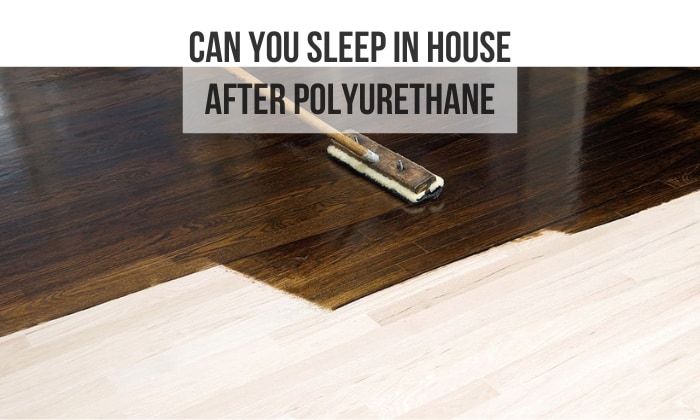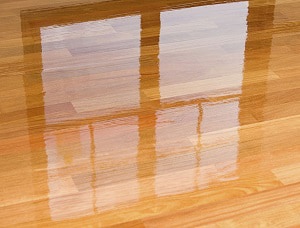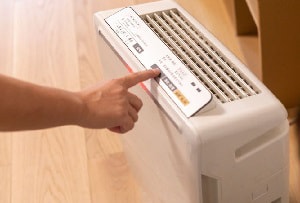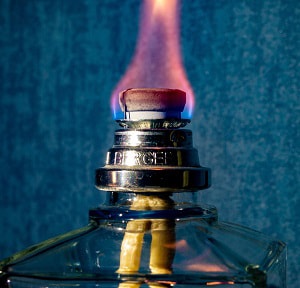Can You Sleep in House After Polyurethane Application?
Polyurethane is a pretty common material in the construction industry, given its durability, aesthetics, and protective qualities against the elements. However, it should also be used with extreme caution, as uncured polyurethane is toxic. So, ... Read more The post Can You Sleep in House After Polyurethane Application? appeared first on Arthitectural.


Polyurethane is a pretty common material in the construction industry, given its durability, aesthetics, and protective qualities against the elements. However, it should also be used with extreme caution, as uncured polyurethane is toxic.
So, can you sleep in house after polyurethane application? This depends on what formula your polyurethane is.
For oil-based polyurethane, it’s best to find somewhere else to sleep. If it’s after water polyurethane, then you may sleep in your house in a different room if no other options are available. That said, with your best interests in mind, I’d suggest leaving home for at least two days, regardless of the polyurethane type you use.
Can You Sleep in House After Polyurethane

1. Consider the type of polyurethane

Let’s get this out of the way: cured polyurethane is not toxic, but uncured polyurethane is. This means you’ll have to wait for this compound to set to be around it.
However, the catch is that the curing time is typically quite long, and its smells can persist in the meantime. This is where the difference in polyurethane formulas comes into play.
Between the two main types, water- and oil-based polyurethane, the former contains fewer volatile organic compounds (VOCs). Given how the VOCs are in the form of gases, which are harmful if inhaled, it helps that water-based polyurethane’s smell goes away much faster.
As such, you may sleep in house after staining floors with water-based formulas, provided that the polyurethane smell in house has diminished and you rest in a different room.
In contrast, after oil based polyurethane application, you can’t stay in your home. Sleeping in other rooms is non-negotiable, as the toxic fumes will be too overwhelming to bear, not to mention its negative impact on health.
2. Are polyurethane fumes toxic? What are its effect on health?

Is polyurethane smell toxic?
Yes, as pointed out above, polyurethane fumes contain volatile organic compounds, which are harmful to humans and animals alike. Breathing in polyurethane is especially detrimental for the elderly, kids, and people with respiratory issues, such as asthma.
One reason behind polyurethane fumes toxicity is a chemical known as isocyanates. In mild cases, polyurethane fumes side effects include eye irritation, scratchy throat, or skin inflammation.
While the symptoms listed above may seem nothing too severe, you’ll be shocked to learn about the long-term effects of polyurethane fumes. Long exposure to isocyanates in polyurethane will result in serious respiratory issues, lung damage, or asthma-like allergies. In addition, the compound is potentially carcinogenic to humans as well.
Then, can polyurethane fumes kill you? To be completely honest, there’s a chance it can, albeit very small.
In any case, rest assured that it’ll not kill you because you inhale a bit of fume from refinishing hardwood floors before and after application, especially if you follow safety protocols, such as making sure the place is well-ventilated.
3. Time to stay out of house after polyurethane

Above, we stated you could sleep in your house after water based polyurethane application, provided that it’s in a different room. However, you should only do so if you’re left with no other option, as lower VOC levels don’t mean it’s completely risk-free.
If you insist on sticking around anyway, at least leave the scene for 8 hours. This allows the water-based polyurethane to dry and diminish the toxic fumes to a certain degree.
As for oil-based polyurethane, 8 hours will not do. With how long it takes for these formulas to dry and their toxicity, it’s advisable to leave the house for at least 2 days.
However, the truth is that polyurethane can still release toxic fumes a week after application, however minimal. Therefore, it’d be a better idea to steer clear of your home for 7 days, even after the refinishing hardwood floors drying time has passed.
Remember how we mentioned that cured polyurethane is not toxic? While the coating may seem dry and safe to walk on, it can take up to a month for the compound to truly cure, so you might still be exposed to the toxic fumes, however minimal. So make sure the place is always ventilated in the meantime to reduce the risk.
Ways to Get Rid of Polyurethane Smell
As it may take 20–30 days for the polyurethane smell to go away completely, chances are that the odor is still around when you return home. Fortunately, there are several measures you can take to address the issue.
1. Improve the room’s ventilation

Bringing fresh air in and improving air circulation are incredibly effective when it comes to eliminating bad odors. Simply open all the doors and windows in the room, turn on the fan, and let things run their course.
2. Use absorbent products

There are plenty of items you can find at home that are excellent at absorbing bad odors. Some examples include a lemon half placed in a bowl of water, distilled white vinegar, baking soda, and activated charcoal.
With the item listed above, all you have to do is place them around various corners of the affected room. Afterward, wait for the smell to diminish before removing or replacing the absorber.
Alternatively, you can opt for commercially available odor removers, such as the VAPORSORB. However, this approach can be a bit messy, as you’ll need to sprinkle the product all over your floor and clean up everything after the smell has subsided.
3. Utilize an air purifier

An especially effective way of eliminating unpleasant polyurethane odors is using an air purifier, particularly one with a dual HEPA H-13 filtration. This solution also has the added benefit of reducing the off-gassing time of polyurethane.
4. Burn a Lampe Berger

A Lampe Berger is a scent diffusion lamp working on the principle that heat can neutralize pungent smells. However, instead of using purely fragrances, you’ll mainly rely on 90% alcohol with only a bit of essential oil instead.
In theory, the lamp can improve the air quality of a 50-square-foot room in half an hour. But since it’s polyurethane fumes we’re dealing with, you can let the lamp do its job for longer.
Frequently Asked Questions

How long does it take to dry?
How long does it take for hardwood floors to dry so you can apply the next coating?
Assuming that the climate where you’re living is warm and relatively dry, it’ll only take 2 hours before you can apply the next layer if using water-based formulas.
As for oil-based polyurethane, the waiting time is much longer, at least 4 hours for fast-drying formulas. Otherwise, you’re looking at a one-day interval between coatings.
For both water- and oil-based polyurethane to fully cure, it generally requires 3 to 4 weeks. That said, fast-drying water-based formulas sometimes only need 3 days to cure and stop off-gassing.
How long are polyurethane fumes toxic?
Since polyurethane is no longer toxic once cured, the takeaway is that its fumes will remain harmful when it hasn’t fully set. And as the curing time varies depending on the type of polyurethane used, you may have to wait up to 3–4 weeks.
This is why we recommend going for fast-drying water-based polyurethane, which dries and cures much faster. If using these products, it’ll be less than a week before your home is safe and habitable again.
Is polyurethane toxic after it dries?
Yes, polyurethane is still toxic after it dries, as it’ll keep on off-gassing until it cures. While it may seem that the coating has set, there are still chemical reactions going on that affect the air. Therefore, polyurethane is only truly safe to be around once it’s cured.
Can I stay in my house while floors are refinished?
If you don’t have anything important to do while the floors are being refinished, I’d suggest going elsewhere. As we have pointed out above, polyurethane fumes are very toxic, and prolonged exposure can lead to many devastating consequences.
Should you have no choice but to stick around, consider taking some safety measures for your own sake:
-
- Open all the doors and windows in the house to ensure proper ventilation.
- Wear a respiratory mask, such as a P
- In case you have to be near the application area, wear protective clothing and non-porous gloves to avoid coming into contact with polyurethane.
And if you feel any negative symptoms from inhaling polyurethane fumes, leave the place immediately to somewhere warm with plenty of fresh air.
Conclusion
Can you sleep in house after polyurethane? Truthfully speaking, I can’t in good conscience recommend you do so, given how detrimental it can be to your health. And let’s be honest, the polyurethane smell is not pleasant to begin with.
Therefore, why not leave the job to the professionals and plan a short vacation in the meantime? It’ll save you the headache of dealing with toxic fumes and give you a chance to make some good memories.
The post Can You Sleep in House After Polyurethane Application? appeared first on Arthitectural.
